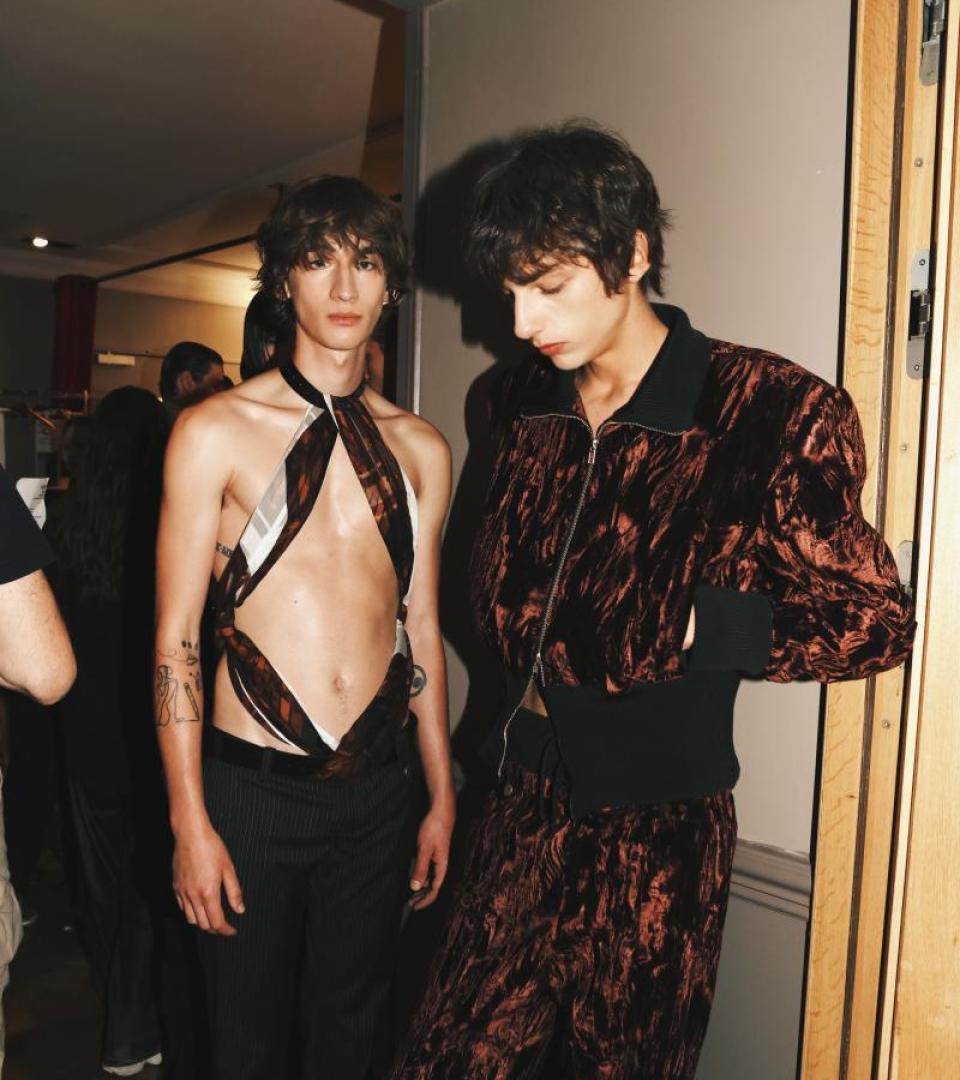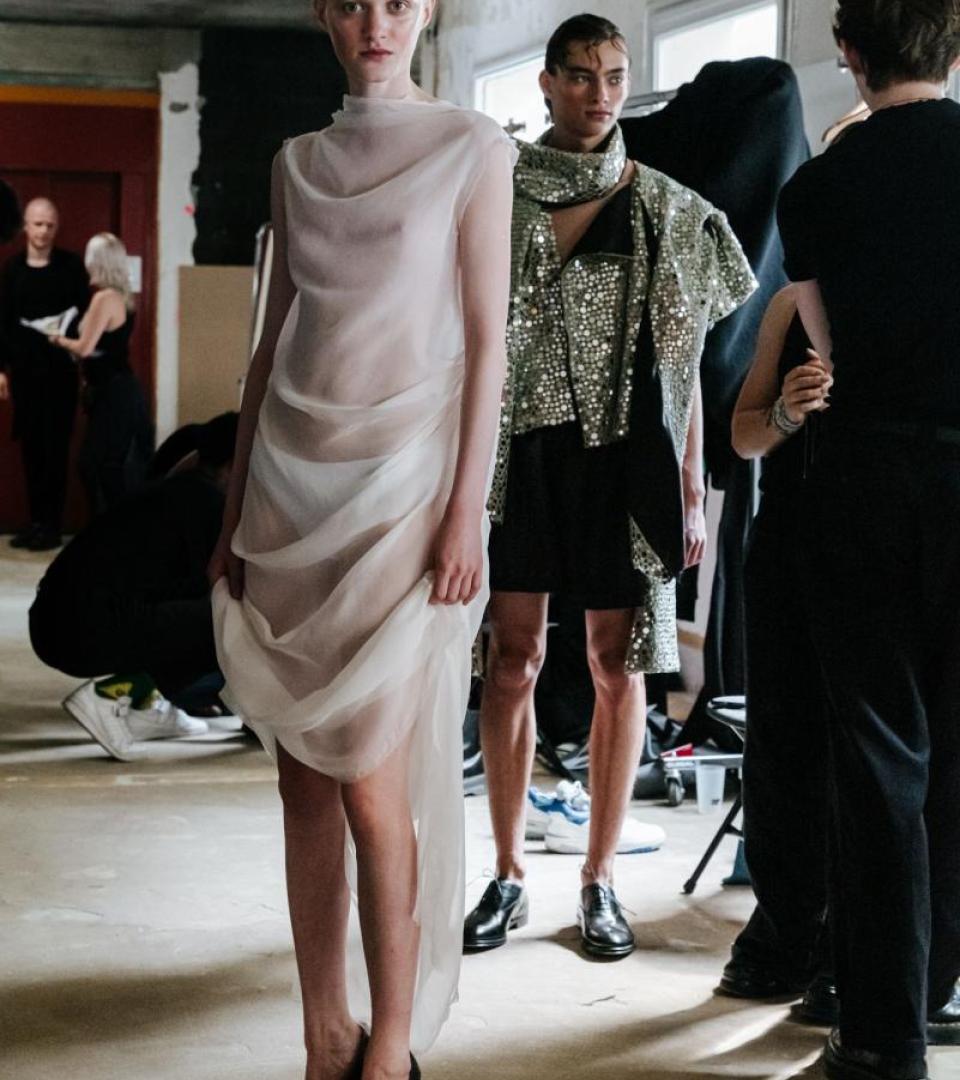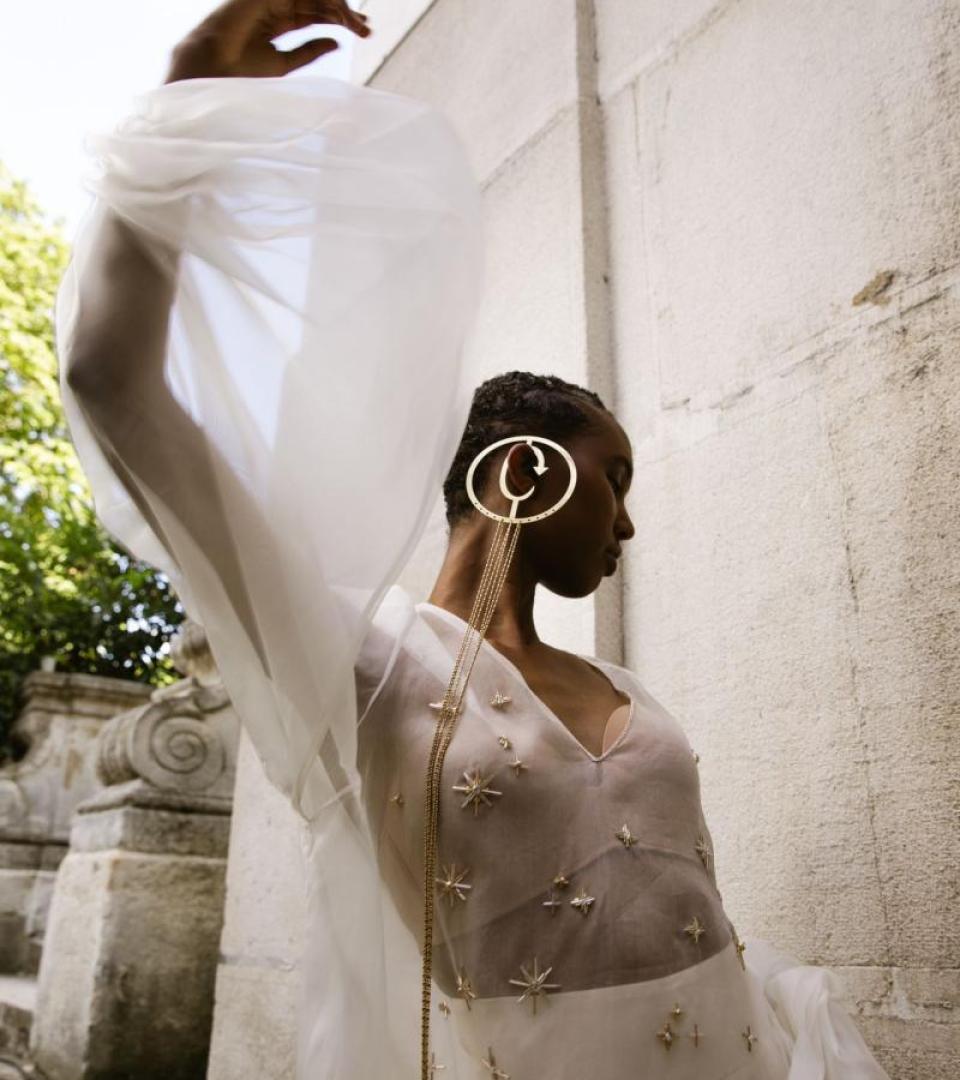How is it that so much fashion from the past feels more relevant than ever today?
Because good design is truly timeless! When you’re wearing vintage, you are pretty certain that few people (or none!) will be wearing the same piece as you. It feels more special. I have always worn a lot of vintage in my life. They are my treasures. I have and still wear my Romeo Gigli coat from 1993, that’s still perfect for today.
Just like all my Yohji Yamamoto’s pieces from the late 1995-2000s, they are still “me.” And many Chanel pieces will always be keepers. Good design, good craftsmanship and especially good quality stand the test of time. And you pair them with different things from different eras. It’s about the mix – the styling – in terms of relevancy. Mixing past and present. Ultimately, they’re the “real deal,” and this is why they’re special and relevant, and you want to collect. And this doesn’t mean designer brands, by the way. Some vintage finds have no label, but you see they are handmade.
What excites you in fashion right now?
I always love to dress up, so I might see a cool inspirational picture of someone somewhere, and I am in the mood. That’s the power and fascination for fashion. It can be very impulsive. It’s an expression of self. And it brightens my day, or it protects me like an armor, when I’m feeling cloudy. Artisanal, crafty and independent brands excite me (Nemeth, Norlha, UK designer, Standing Ground), or designers like Rick Owens or Haider Ackermann – and the Japanese triumvirate obviously! I also love fine jewellery (Ana Khouri, Griegst, vintage Ilias Lalaounis). I’m always about the mix, how you pair things. You’ve got to make it your own. Go for individuality and the good spirit! What else excites me? I like the industry. The individuals working in the industry: the writers, the photographers, the art directors, the producers, the independent retailers etc.
What is one reason to be optimistic about the state of fashion going forward?
There are good designers out there; and these LVMH, ANDAM, Festival de Hyères Prizes are wonderful in helping these creatives move ahead. Generally, I am glad to see people who are true fashion lovers, and who get excited about things, especially when they are individualistic. I wish there was less waste, and I hope everyone will hold onto their treasures and treat them as such.
Is AI contradictory or complementary to Haute Couture?
AI can be useful in any field, as it helps with research of any kind. Therefore, AI is simply part of daily life, no? But Haute Couture as we know it, the clothes making part in itself (whether for the show or for the client), is supposed to be largely hand-made.
We often hear couture designers refer to their ateliers as laboratories. Can haute couture still define new ideas in design?
When you are John Galliano at Maison Margiela, one can safely say Haute Couture is a laboratory, yes!
What can we learn from Haute Couture?
I generally love history. I always want to know the beginning and the evolution of something – the knowing, the context. I learned about Haute Couture and its craft when I was at Chanel over 12 magnificent years, and you get to dive into that world, see everything on a microscopic level. God/the devil is in the details. You actually must see it up close. And it’s not only eveningwear and gowns; it’s daywear too. You learn to see subtleties, and you develop an even more refined eye. It's not only the tailoring or the draping, it’s also about the custom-made fabrics, the work on the fabric’s surface. And of course, there are the Métiers d’Art houses that work on the embroideries or the pleating and so forth. They are keeping craftsmanship at the most experienced level alive. If you love craftsmanship, Haute Couture is it! This is clothes-making in its purest and finest form.
Can you suggest a fashion mantra for ’24?
When I get dressed in the morning, I pick something I haven’t worn in a long, long time. This way I circulate the goods, and it feels (sort of) “new,” and I wear it in a different way. Be creative in your own closet, I suppose!
This interview has been lightly edited.



